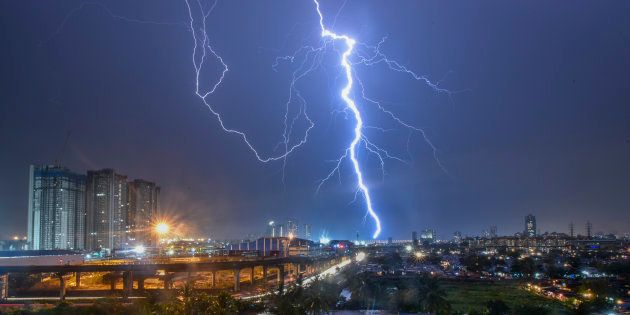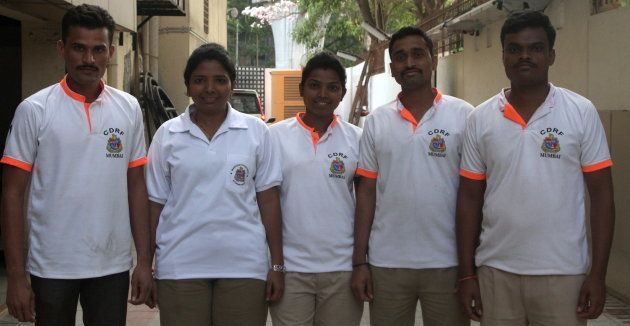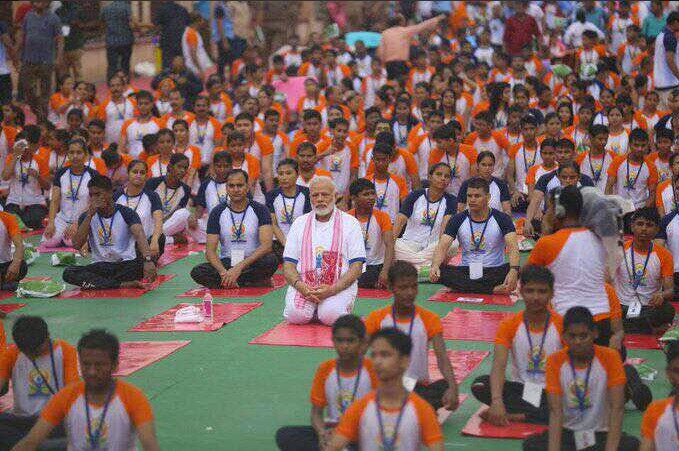
MUMBAI, India—The 26-year-old security guard was heading to central Mumbai to pray to the Hindu god Ganesh, the city's most famous deity, when his train suddenly stopped. The tracks had disappeared under the murky water, a common problem in the city's annual monsoons.
A slight man, Vilas Munde decided to stay wait out the flood in the train compartment. But the water kept rising.
As it reached his neck, Munde had no choice but to wade through the four-feet deep lake that now surrounded him. Grabbing a tall pole, he prodded his path to try to detect the open manholes known to swallow city-dwellers.
Munde walked beside the train tracks heading towards Sion station. When he arrived hours later, he realized he had to give up on the festival and head to his work shift at a BMC office in Powai. He got to Powai at 2:00 am, having walked in water for over 12 hours.
"I was literally petrified," he said.
It took 24 hours for the water level to fall enough for the trains to start again and carry Munde to his one-room apartment outside of Mumbai.
Munde was one of thousands of Mumbai residents who were stranded in last year's floods that claimed over 40 lives.
This year, Munde is one of a group of 200 security guards who are training this spring as part of Mumbai's new City Disaster Response Force (CDRF). The first of its kind in any Indian city, this task force is charged with responding rapidly to help this city's more than 20 million residents survive the annual, devastating floods brought on by the seasonal monsoons.
Munde is one of a group of 200 security guards who are training this spring as part of Mumbai's new City Disaster Response Force.

'No system can cope with this'
The force is a brainchild of Mahesh Narvekar, chief officer of disaster management for the Brihanmumbai Municipal Corporation (BMC), the governing civic body of Mumbai. Last year's floods—the worst since the 2005 deluge that killed over a thousand people—convinced him that Mumbai needed a dedicated disaster response team.
Flooding in Mumbai and cities across South Asia is an annual occurrence, usually as a direct result of the monsoon. Yet there has been a threefold increase in extreme rain events since 1950, according to a paper published in the journal Nature in 2017. The effects of these changing weather patterns are particularly acute in crowded, rapidly urbanizing, cities like Mumbai.
In Mumbai, rain-triggered building collapses have emerged as a major killer in the monsoon. Last year, at least 33 people died, the Associated Pressreported, when a building in bhendi bazaar crumbled. Another 17 people died after a four-story residential building in a suburb called Ghatkopar gave way.
The city has over 16,000 dilapidated buildings—most built before 1940—according to Rajendra Lokhande, a senior official at the BMC Disaster Management Unit.
The city lists hundreds in its "C1 Category" – the most dangerous. While they have demolished and evacuated some, it can be difficult to get residents to leave, as the Hindustan Timesreports. It is the city's responsibility to notify building owners of unsafe conditions, but Lokhande says it is up to the landlords to retrofit the buildings.
Many buildings in Mumbai deal with a problem of "everyday wetness", architect and urban planner Prasad Shetty said. Moisture seeps into walls and floors, and leakages during rains weaken the overall building structure.
Shetty says the city's approach needs to be more focused on the everyday vulnerabilities of neighborhoods, referring to the poor quality of construction, infrastructure and planning in the slums and century-old chawls.
Meanwhile, climate change is worsening flooding, by most accounts.
"Rain days are compressing and becoming more intense. No system can cope with this," Narvekar said.
The monsoons appear to take place in spurts of higher and lower intensity, causing more flash floods.
Narvekar said the city can only do so much, given that, "Mumbai is a funnel—it's surrounded by the sea. During high tide, where will the water go?" he asks.
Rain days are compressing and becoming more intense. No system can cope with this.
Since the 2005 deluge, the city has tried to improve its response to the floods. A disaster management plan was formulated in 2007 and a Disaster Management Unit was set up to coordinate relief and rescue efforts.
But last year's floods showed what happens when a high tide meets heavy rains and a lack of preparation.
Ramprasad Palve
Almost every security guard in the training has had a first-hand encounter with the 2017 floods: Ramprasad Palve was posted at the slaughterhouse in Deonar when the waters began to rise.
That morning, Palve, a soft-spoken 26-year-old, found himself immersed in four feet of water inside the slaughterhouse. He rushed to move the animals from the ground floor to the first floor.
"The animals were so scared that they weren't making any noises," Palve said in an interview. He slept at the slaughterhouse that night, finding space on the floor.
The next day, he awoke to an "horrific scene" Palve said. The water had receded, revealing animal carcasses everywhere. "It was stinking and in very bad condition."
The animals were so scared that they weren't making any noises.
But Mumbai is resilient, and despite the foul environment, the market reopened for business that day.
Palve says he felt sorry for the merchants who lost a large part of their livelihoods that day. "I'm from a village. I've worked in the fields so I know how it feels when you could lose the yield to a heavy rain or flood" he said.

Band aid?
Munde, Palve and the other security guards hope this monsoon will be different now that they've been trained in disaster response.
On one warm day earlier this year, the guards practiced rescuing victims from a collapsed house.
Wearing helmets and bright orange jumpsuits, they used a drill to puncture through a wall and crawl through. Working in teams, they were charged with finding missing people, and carrying them out of the building.
Narvekar is planning to initiate the new force in time for this year's rains, and is considering housing them in one building in Mumbai for the summer. He wants them to support rescue efforts alongside the fire brigade, which is always the first to respond in disasters.
But while the city is busy preparing for the monsoons, it's not certain whether the CDRF is merely a band aid for the city's larger environmental and infrastructure problems, or if it's a genuine step forward "The disaster response narrative will only force an ad hoc intervention," Shetty said.
But Asavari Devadiga, an environmental planner from Mumbai who is now a lecturer at The University of California Berkeley, says the task force is a result of a greater demand for accountability and more bad publicity focused on the city. "It's something that used to be lip service in the past – but now they are actually doing it which is a big thing," she said.
It's something that used to be lip service in the past – but now they are actually doing it which is a big thing.
Environmental activist Rishi Aggarwal says the city government itself is part of the problem.
"The fundamental reason at the root of it is bad governance and corruption," said Aggarwal.
Aggarwal said large projects like unblocking drains often face delays and inefficiencies, and rarely address the root cause of the problem.
"The next decade is going to be very crucial – with more transportation projects coming up," said Aggarwal, referring to the city's underground metro currently under construction. "Unfortunately, we try to make water adapt to our bad habits. That's not going to happen. You have to change your designs."
Also on HuffPost India:
